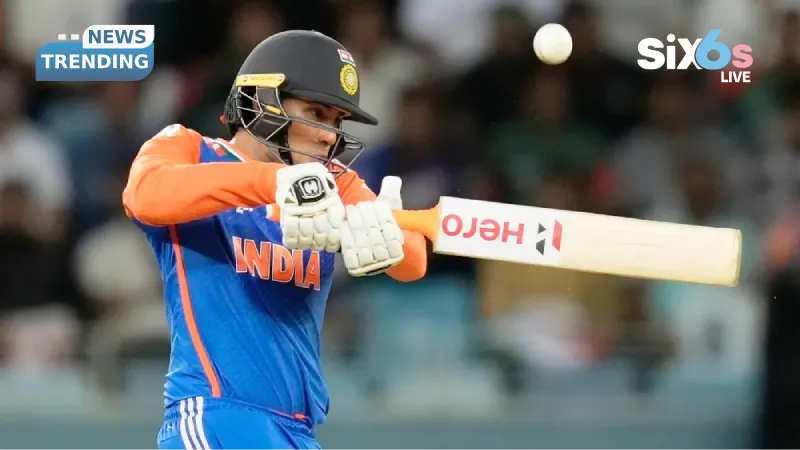If you caught Abhishek Sharma lashing the ball to the boundary in Hyderabad or demolishing Pakistan in Dubai, you might be asking the same stupid question I was: how does a small-framed, unpretentious batter hit like he’s got pogo sticks in his wrists? Spoiler alert: it’s not muscle. It’s a repeatable, rhythmic swing that looks oh-so-simple until you attempt to recreate it. He even hit one 106 metres that has you looking to see if the gun wasn’t reading Andre Russell.
The ‘Wave’ and the Magic of Timing
Coaches and players refer to it as the ‘wave’ – that minuscule, almost cinematic suspension and an unseen movement at the top of the backswing that allows Abhishek to defer commitment and then explode. He begins with his hands in the center, underneath his belly button, which elongates the arc and cultivates rhythm as opposed to squashing the stroke into a muscular push. Because of his quick hands and seamless kinetic chain, he’s able to identify a change-up or fuller length and redirect at the last minute. After his 39-ball 74 in Dubai, Ravichandran Ashwin indicated a silky cover drive, but I think the point is deeper: one repeatable shape, infinite fine-tuning.
Kinetic Chain — Power That Starts from the Ground
Abhishek’s power comes from the ground up: feet press, hips rotate, torso uncoils, shoulders follow, and lastly, the wrists deliver the snap. Smaller hitters don’t have the raw mass to simply use all of it; therefore, they have to find bat-head speed via sequencing and separation of hands and body. Extending the lead arm creates space and increases the radius of rotation, and the additional radius allows the bat to accelerate more before impact. The bottom hand times the finishing flick so the compact frame explodes the ball as much as the bigger hitters do when they try to muscle it.
Why It Looks Effortless — Technique, Trust, and Environment
What gives Abhishek that effortless feel is long-standing practice, smart coaching, and allowing him to play instinctively. Yuvraj Singh was introduced to the basics in Chandigarh; it was net sessions with Brian Lara, and the chartered backing of Sunrisers Hyderabad that honed his timing. He backed that up in the Asia Cup as well, hitting a breezy 61 off 31 in a dead-rubber, still deciding when to throttle down and when to push. Fans see the sixes; coaches see the discipline, that’s the real sauce.
Abhishek Sharma’s bat swing is a tidy paradox: it’s simple enough at face value, but it’s fueled by incredibly disciplined mechanics, rhythm, and timing built around the keeping of the hands. He demonstrates power in modern T20 doesn’t equal girth; it comes from a combination of fast hands, sequencing, and willingness to trust a simple swing. So, the next time a diminutive hitter blows the stands away, just remember, it can’t be dumb luck: it is the ‘wave’, deliberate and controlled. If coaches are looking for the model for the next breed of hitter, it is to build a swing around rhythm, timing, separation, and the belief to trust a simple swing – together, these four things can create more redundancy than muscle, both at the nets, and under pressure.
Stay updated on the latest cricket news and exciting updates at Six6slive. Dive into our in-depth articles and analyses to connect with the action today!
